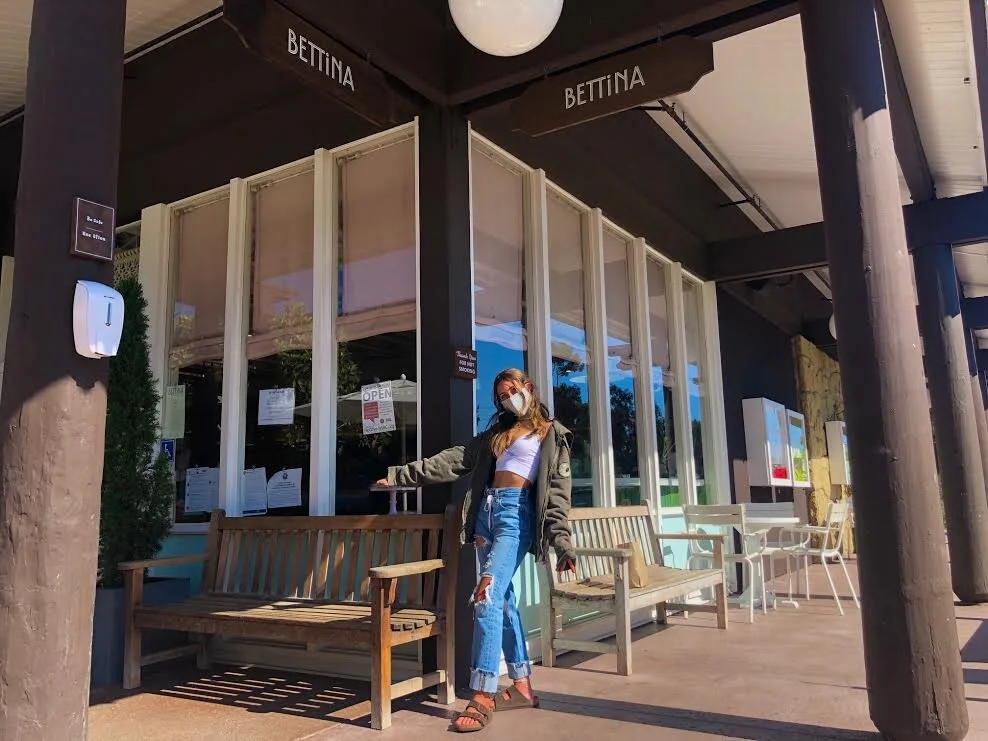Surfrider’s Ocean Friendly Restaurants Program
The Surfrider Foundation is a nonprofit organization with a goal of protecting the oceans. They have chapters all over the world, and many volunteers join these chapters. After reading their website, I became interested in the Surfrider Foundation and reached out to their volunteers. I got the chance to interview a woman named Morgan, who has been volunteering for the organization for about 5 years. She does a lot of work with Surfrider’s Ocean Friendly Restaurants Program in Santa Barbara. Morgan explained that her family owns a restaurant in New Jersey, so she is familiar with the restaurant industry, the trash it produces, and the challenges of cutting back on trash.
I was curious about how the Ocean Friendly Restaurants Program started. During the interview, Morgan explained that the program originated from the Huntington Beach chapter. Then, other chapters got on board and the program started to gain speed. The Surfrider Foundation realized that the program could make an impact on a national level, so the headquarters got involved and helped more chapters join. The Ocean Friendly Restaurants Program was launched in Santa Barbara in 2018, and there are about 30 restaurants in Santa Barbara that are on board now.
The Surfrider volunteers have worked hard to spread the word about the program and convince restaurants to become ocean friendly. Morgan described that the first step was getting a team of volunteers together and making a list of all the restaurants in Santa Barbara. The team then identified which restaurants were already on the right track, and which restaurants would be more challenging to get on board. The volunteers started off by working with the restaurants that were easy to convince so that they could quickly build some momentum. In order to spread the word, the volunteers hosted an event in Santa Barbara and celebrated the launch of the program. At the event, there were local elected officials and press, and scientists who study plastic pollution gave speeches. The volunteers also go to the restaurants in person and try to convince them to join the program, which is a strategy that has been difficult to continue during the coronavirus.
In order to become ocean friendly, a restaurant needs to fulfill specific criteria. This criteria was developed by the Surfrider Headquarters. It requires restaurants to stop using styrofoam and plastic bags, recycle properly, use reusable foodware for onsite dining, and only provide plastic utensils and paper straws upon request. Each requirement is crucial and protects the environment in a different way. However, one of the first and most important requirements is having no styrofoam. This is because when styrofoam gets into the ocean, it breaks up into tiny pieces that are very hard to clean up. These pieces later become microplastics that are commonly ingested by animals.
During the interview, Morgan described one of the program’s greatest successes: the first Ocean Friendly Restaurants Week. During this week, there was a lot of promotion of the ocean friendly restaurants and each restaurant highlighted an ocean friendly dish. The restaurants donated the proceeds from the food to the Surfrider Foundation, which helped to raise funds for the Santa Barbara Surfrider chapter and for other ocean conservation projects.
However, Morgan also explained the challenges that she and her team faced while trying to convince certain restaurants to get on board. It was especially difficult to get restaurants that primarily do takeout to join because takeout generally involves lots of single use plastics. Also, some restaurants couldn’t afford to replace their plastic and styrofoam because the more sustainable options tend to be more expensive.
The community response to this program has been positive. Because Santa Barbara is on the coast, most people feel connected to the beach and the ocean, so they want to help protect the ocean and keep trash off the beach. People also seem to appreciate being able to eat in an ocean friendly restaurant because they don’t have to think about making sustainable choices while they eat.
Although the program has been successful, many people still don’t have access to restaurants that are ocean friendly. Morgan gave me advice on how to be as sustainable as possible while eating at a restaurant that is not ocean friendly. She explained that the ideal solution is to eat at the restaurant, rather than getting takeout. However, eating at a restaurant is difficult right now because of the coronavirus. If takeout is the only option, it is important to ask for no disposable utensils, no straw, and no plastic bag and to bring your own reusable items. Also, make sure to ask for nothing disposable while placing your order so the restaurant is prepared and doesn’t end up giving you lots of plastic
